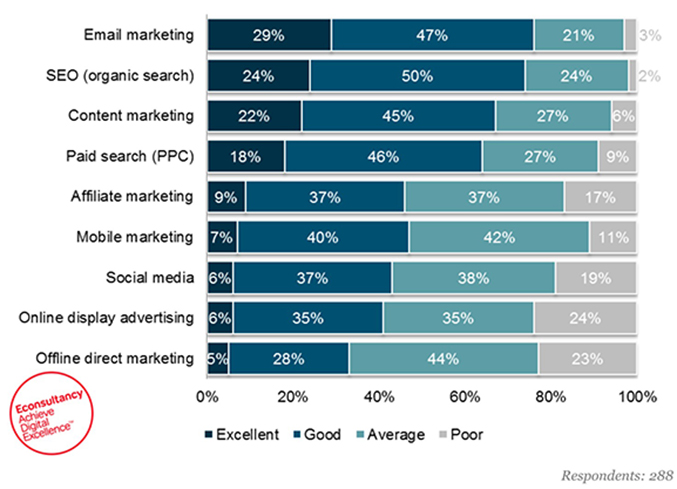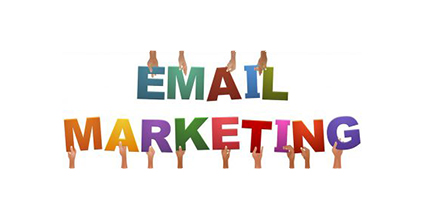Adestra asked marketing agency executives about the role email plays and where the industry is heading. The findings reveal agency success with email marketing and strong ROI from email campaigns.
Brand architects, data specialists, digital pioneers and marketing strategy consultants – all these terms describe agency marketers and the different roles they own as part of providing marketing services to their clients. Regardless of which one you identify with, you probably know that agencies are more agile when it comes to adopting email innovation and achieving success with it, because they are exposed to a wider variety of challenges, needs, budgets and solutions through their clients.
For example, agencies are producing better ROI from email, report better performance and are more successful with automation and personalisation techniques than their in-house counterparts.
Once agency marketers have had positive experiences of using a particular strategy with one client, they are more likely to encourage innovation and radical thinking with other clients, too. That’s why brand marketers should perhaps keep a close eye on news and success stories from this sector. To find out more, Adestra asked six marketing agency executives about the role email plays, what success looks like and where the industry is heading.
Email has stood the test of time . . . and it’s not going anywhere
With email marketing ROI often quoted at £38 per £1 spent (DMA National Email Report) and 76% of agency marketers considering their return as ‘excellent’ or ‘good’ (2017 Email Industry Census), it’s not surprising to see that executives place great importance on it.
Pictured below, we asked agencies: How do your clients typically rate the following channels or disciplines in terms of return on investment?

“Email, specifically within the campaign side of things, is becoming increasingly important. If anything, it’s like our bread and butter,” Matthew Slaymaker, CACI, said.
“At the moment, there isn’t a channel to replace email and it’s going from strength to strength.” Greg Caswell, Karmarama, said.
One of unique features of this channel is that the marketer is in control of the audience receiving the message, giving great potential for personalisation, segmentation and testing. While TV advertising and social media engagement could be considered more glamorous channels, their strength lies in reaching the masses, not maximising the impact of key messages. By having the ability to segment data based on criteria relevant to each business (such as previous spend in B2C or lead stages in B2B), marketers can alter their key message to increase relevance and personalise the customer journey.
In addition, they can create specific test segments that fit their customer profiles and experiment with different creative copy or designs, taking the results to wider digital and offline audiences after that. By testing ideas prior to launch, marketers can anticipate the impact of their messaging better and choose the tactics that are likely to be most successful.
If used in the right way, email can also be an incredibly powerful channel for building a relationship with your customers through ‘First-Person Marketing’, the strategy of sending individualised communications based on needs and interests rather than adopting an email batch-and-blast approach. By being more agile and adopting or testing technology innovations quicker, agencies find the best way to deliver a highly-individualised customer experience for their clients’ subscribers.
“Email is the main tool we utilise to help our clients retain their customers, increase the database lifetime value and build greater loyalty and engagement. It keeps the brand front of mind with the customer, showing them relevant products and information, launching new products, engaging with them and encouraging repeat purchases,” Al Keck, Infinity Nation, said.
A mind shift to stand out in the inbox
They might not face the same challenges as in-house marketers – which allows them to be more experimental in their approach to marketing – but agencies are under more time pressure to plan, produce and report back on their activities.
According to Litmus’s recent State of Email Production Report, the majority of marketers spend 1-2 weeks preparing an email campaign from idea generation to pressing the launch button. But individual campaign production cycles can vary wildly – anywhere between a few hours to three weeks – depending on the campaign and the sign-off stages in each client’s company.
In order to cope with this added pressure, email professionals in agencies favour a modular template approach to the more traditional bespoke HTML build, which enables fast long-term campaign creation.
“During the past year we’ve been doing a lot of work with interactive email, things like carousels, search bars that lead straight to the search results page. Check what your clients’ users are opening on, give that audience the best experience you can and then gracefully degrade down to desktop, Outlook, where they can still get the message in a meaningful format without the bells and whistles,” Slaymaker said.
To prevent day-to-day campaigns from being too similar, email professionals in agencies are more likely to use personalisation, dynamic content and automation to stand out in the inbox and enhance the customer experience.
Moving beyond first names
The email industry has long championed personalisation as a necessary tool in an email marketer’s kit beyond the ‘Dear First Name’ tactic.
“It’s important for the future of email that we apply not just things like first names, but use data to inform tone of voice, maybe look and feel as well” was Slaymaker’s valid suggestion.
In fact, agencies are proud to have adopted personalisation as part of their general marketing strategy and they can deliver it throughout the funnel at scale. This is the highest form of personalisation and, according to the 2017 Email Industry Census, 17% of agencies can already deliver on it. Personalisation is also one of the four elements of First-Person Marketing (alongside automation, optimisation and integration).
Let the context drive the content
Dynamic content is not something new, but its use is still sparse compared to the total volume of email sent on a regular basis. Of course, using it just for the sake of it won’t bring the desired uplift in results, but what do agency marketers do that is different? They use it in conjunction with other email strategies and evaluate their customers’ path to conversion to see where it will have the biggest impact.
“Dynamic content is really one of those underused aspects of email at the moment. Instead of sending seven different versions of an email, you can just send one and show subscribers the right content for them”, Sadie Wise, Genie Goals, said.
Using automation to follow the customer journey
Automation can be extremely useful not only in matching the correct customer lifecycle stage with the correct message in the email environment, but also across channels and devices using multi-channel triggers. This is where the data specialisation and management techniques become crucial to be able to correctly deliver relevant messages at scale.
“If we understand from the data that recipients respond best to receiving a series of emails that progressively add more and more value, rather than one great big newsletter at the end of the month, then that’s a principle we can apply to our other clients as well. Understanding data better is an approach that we’re going through at the moment,” Ross Carroll, Fat Media, said.
While these strategies are not necessarily new to in-house marketers, agency marketers report they have found the sweet spot in how they can help their clients achieve more with the latest technology and techniques. They have a bigger testing ground and more results to learn from – so it’s easier to be more advanced in their use when you know which direction to take.
You can find more insight into how agencies use email by downloading a copy of Adestra’s eGuide: How agencies Push Innovation in Email.
Read also:
Email marketing subject lines: avoid the mundane but mention benefits
The marketing arsenal: are marketers ignoring an important asset they already have?







Leave your thoughts